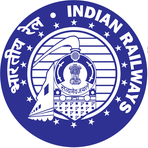The Digital Shift and Urban Mobility: A New Era for Indian Railways and Metro Systems
August 31, 2024, 3:53 am
In the bustling landscape of Indian infrastructure, two significant developments are reshaping the way citizens interact with public transport and employment opportunities. The integration of DigiLocker with the Indian Railways' hiring portal and the ongoing expansion of metro systems in cities like Kolkata and Mumbai mark a pivotal shift towards modernization. These initiatives not only streamline processes but also enhance security and efficiency, setting the stage for a more connected future.
The Indian Railways has taken a bold step by integrating DigiLocker into its hiring portal. This move is akin to giving a digital facelift to an age-old system. With this integration, job applicants can now upload their documents directly to a secure platform. Gone are the days of cumbersome paperwork and long queues. This digital transformation is a breath of fresh air in a system often bogged down by bureaucracy.
DigiLocker, a government-backed initiative, serves as a virtual vault for important documents. It allows candidates to manage their submissions with ease. This shift not only simplifies the recruitment process but also enhances the security of sensitive information. Imagine a world where your personal data is safeguarded like a treasure in a chest, accessible only to those with the right keys. That’s the promise of DigiLocker.
The benefits extend beyond mere convenience. By reducing the reliance on physical documents, the Railways can process applications faster. This means quicker hiring decisions and less administrative hassle. The integration fosters a streamlined approach, making it easier for both applicants and recruitment teams to track submissions. It’s a win-win scenario, reminiscent of a well-oiled machine running smoothly.
But the digital revolution doesn’t stop at recruitment. In Kolkata, the East-West Metro has emerged as a lifeline amid social unrest. As protests erupted on the streets, the metro system became the sole reliable means of transport between Kolkata and Howrah. Picture a sturdy bridge connecting two islands in a stormy sea. The metro carried over 47,000 passengers by 5 PM, significantly surpassing its average ridership. This surge highlights the metro's critical role in urban mobility, especially during turbulent times.
The East-West Metro, in conjunction with the North-South Metro, showcases the resilience of public transport. It stands as a testament to the city’s commitment to providing reliable services, even when chaos reigns above ground. Metro officials anticipate that ridership could exceed record numbers, proving that when the going gets tough, the metro gets going.
Meanwhile, in Mumbai, the Mumbai Metropolitan Region Development Authority (MMRDA) is making strides with the tender for Line 4 of the Mumbai Metro. This ambitious project is akin to laying down the tracks of progress. Spanning from Bhakti Park to Mulund Fire Station, the project encompasses a comprehensive scope of work, including design, construction, and testing. The investment is substantial, reflecting the city’s determination to enhance its public transport infrastructure.
As Mumbai continues to grow, the need for efficient transport solutions becomes increasingly urgent. The metro system is not just a mode of transport; it’s a lifeline for millions. The construction of Line 4 is a step towards alleviating congestion and improving connectivity. It’s like planting seeds for a greener, more accessible urban future.
In Patna, the District Magistrate is pushing for expedited land acquisition for the Patna Metro Rail Project. This urgency mirrors the fast-paced demands of urban development. With 75.9 acres already acquired, the focus is on removing obstacles to ensure timely project completion. The call for swift action is a reminder that infrastructure projects require not just vision but also decisive execution.
The integration of technology and infrastructure development is a powerful combination. It reflects a broader trend towards digitization in various sectors, aligning with the government’s push for modern solutions. The Railways’ adoption of DigiLocker and the expansion of metro systems are not isolated events; they are part of a larger narrative of progress.
As these initiatives unfold, they promise to reshape the urban landscape. The integration of digital solutions in recruitment and the expansion of metro networks signal a commitment to efficiency, security, and accessibility. These developments are not just about trains and documents; they are about creating a more connected society.
In conclusion, the integration of DigiLocker with the Indian Railways' hiring portal and the expansion of metro systems in Kolkata and Mumbai represent a new chapter in India's infrastructure story. These changes are like the dawn breaking over a city, illuminating the path towards a more efficient and connected future. As India embraces these advancements, the potential for growth and improvement in public transport and employment processes is limitless. The journey has just begun, and the tracks are laid for a brighter tomorrow.
The Indian Railways has taken a bold step by integrating DigiLocker into its hiring portal. This move is akin to giving a digital facelift to an age-old system. With this integration, job applicants can now upload their documents directly to a secure platform. Gone are the days of cumbersome paperwork and long queues. This digital transformation is a breath of fresh air in a system often bogged down by bureaucracy.
DigiLocker, a government-backed initiative, serves as a virtual vault for important documents. It allows candidates to manage their submissions with ease. This shift not only simplifies the recruitment process but also enhances the security of sensitive information. Imagine a world where your personal data is safeguarded like a treasure in a chest, accessible only to those with the right keys. That’s the promise of DigiLocker.
The benefits extend beyond mere convenience. By reducing the reliance on physical documents, the Railways can process applications faster. This means quicker hiring decisions and less administrative hassle. The integration fosters a streamlined approach, making it easier for both applicants and recruitment teams to track submissions. It’s a win-win scenario, reminiscent of a well-oiled machine running smoothly.
But the digital revolution doesn’t stop at recruitment. In Kolkata, the East-West Metro has emerged as a lifeline amid social unrest. As protests erupted on the streets, the metro system became the sole reliable means of transport between Kolkata and Howrah. Picture a sturdy bridge connecting two islands in a stormy sea. The metro carried over 47,000 passengers by 5 PM, significantly surpassing its average ridership. This surge highlights the metro's critical role in urban mobility, especially during turbulent times.
The East-West Metro, in conjunction with the North-South Metro, showcases the resilience of public transport. It stands as a testament to the city’s commitment to providing reliable services, even when chaos reigns above ground. Metro officials anticipate that ridership could exceed record numbers, proving that when the going gets tough, the metro gets going.
Meanwhile, in Mumbai, the Mumbai Metropolitan Region Development Authority (MMRDA) is making strides with the tender for Line 4 of the Mumbai Metro. This ambitious project is akin to laying down the tracks of progress. Spanning from Bhakti Park to Mulund Fire Station, the project encompasses a comprehensive scope of work, including design, construction, and testing. The investment is substantial, reflecting the city’s determination to enhance its public transport infrastructure.
As Mumbai continues to grow, the need for efficient transport solutions becomes increasingly urgent. The metro system is not just a mode of transport; it’s a lifeline for millions. The construction of Line 4 is a step towards alleviating congestion and improving connectivity. It’s like planting seeds for a greener, more accessible urban future.
In Patna, the District Magistrate is pushing for expedited land acquisition for the Patna Metro Rail Project. This urgency mirrors the fast-paced demands of urban development. With 75.9 acres already acquired, the focus is on removing obstacles to ensure timely project completion. The call for swift action is a reminder that infrastructure projects require not just vision but also decisive execution.
The integration of technology and infrastructure development is a powerful combination. It reflects a broader trend towards digitization in various sectors, aligning with the government’s push for modern solutions. The Railways’ adoption of DigiLocker and the expansion of metro systems are not isolated events; they are part of a larger narrative of progress.
As these initiatives unfold, they promise to reshape the urban landscape. The integration of digital solutions in recruitment and the expansion of metro networks signal a commitment to efficiency, security, and accessibility. These developments are not just about trains and documents; they are about creating a more connected society.
In conclusion, the integration of DigiLocker with the Indian Railways' hiring portal and the expansion of metro systems in Kolkata and Mumbai represent a new chapter in India's infrastructure story. These changes are like the dawn breaking over a city, illuminating the path towards a more efficient and connected future. As India embraces these advancements, the potential for growth and improvement in public transport and employment processes is limitless. The journey has just begun, and the tracks are laid for a brighter tomorrow.

